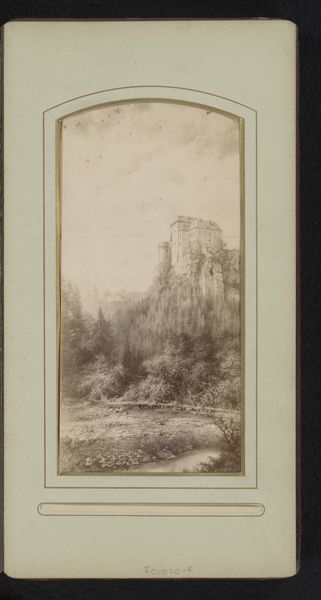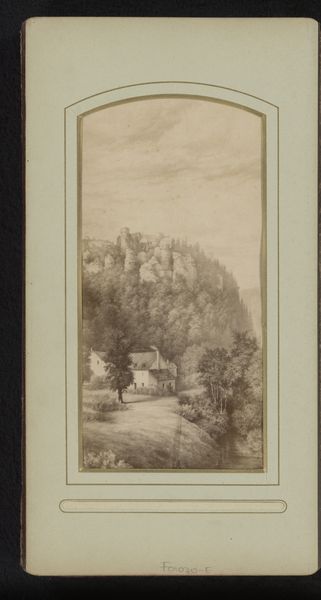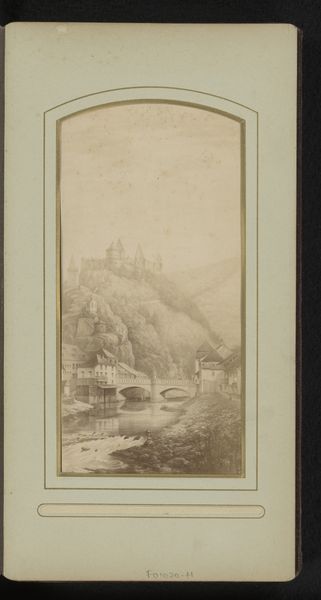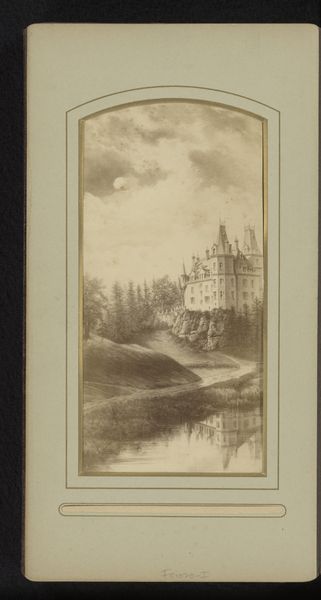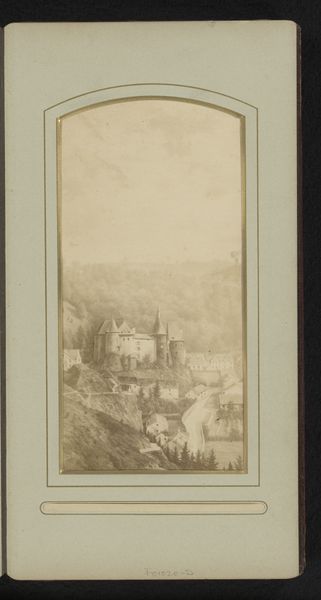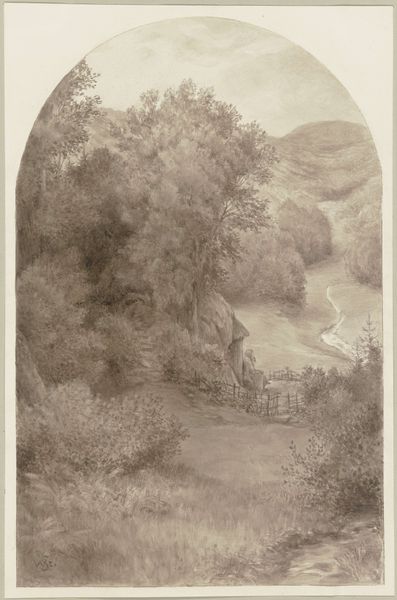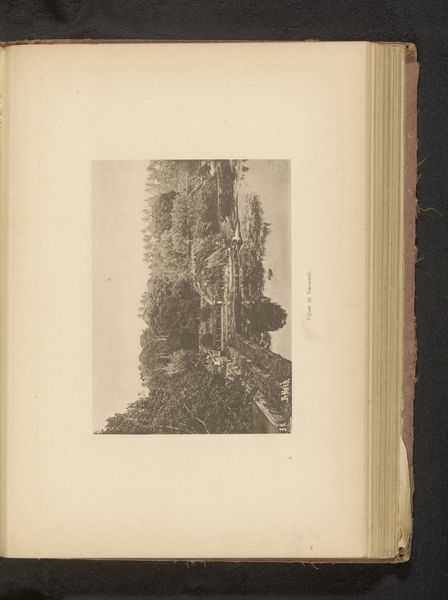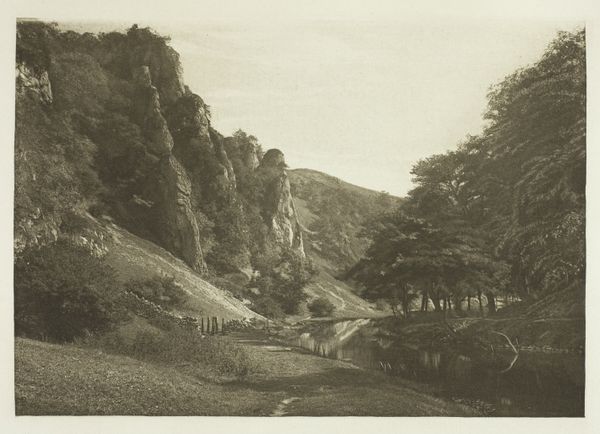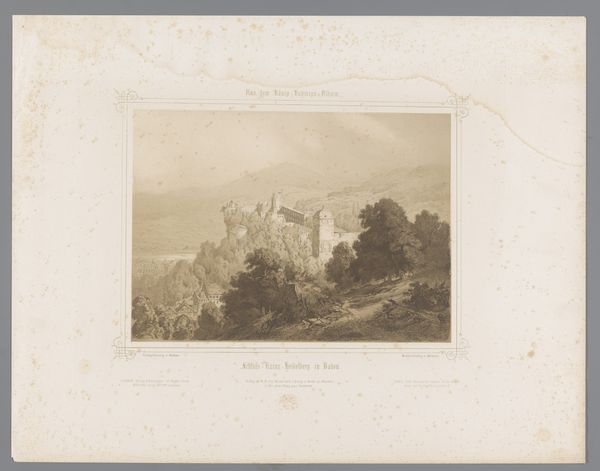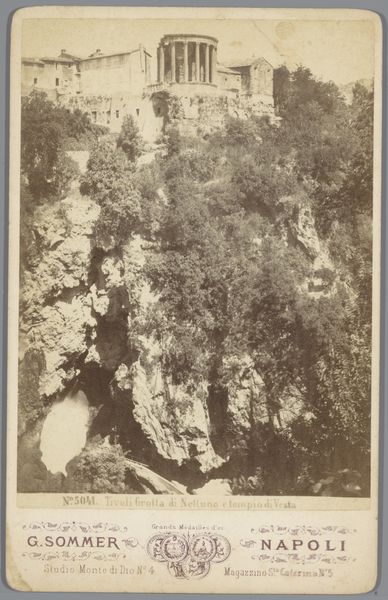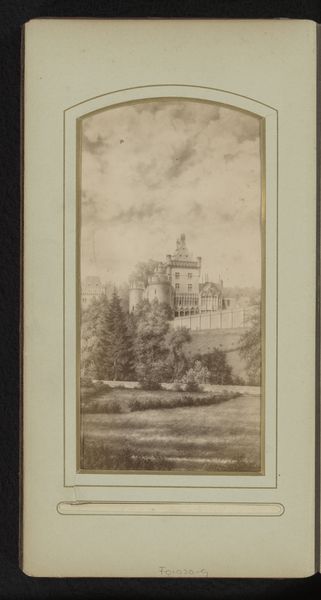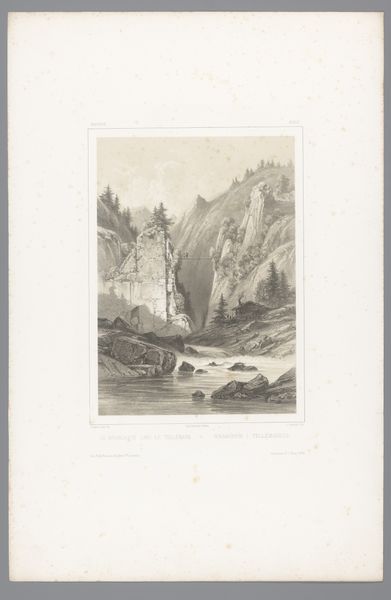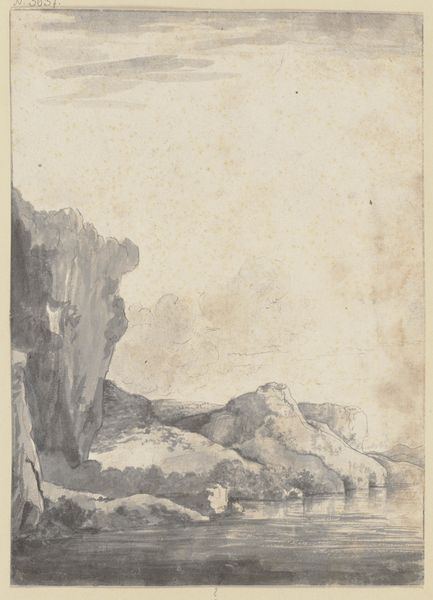
Fotoreproductie van een prent van de ruïne van een kasteel op een berg before 1889
0:00
0:00
Dimensions: height 188 mm, width 92 mm
Copyright: Rijks Museum: Open Domain
Curator: Looking at this print dating back to before 1889, titled "Fotoreproductie van een prent van de ruïne van een kasteel op een berg," one can sense a certain melancholy hanging in the air, a sort of quiet grandeur amidst decay. Editor: I'm immediately drawn to the way the textures interplay here—the soft focus of the trees against the harsh geometry of the castle ruins. You can almost feel the dust and grit of the aged materials. Curator: It evokes a romantic sensibility, typical of the period. Castles, particularly in ruins, symbolize the decline of feudal power, embodying notions of history, memory, and loss of traditional societal structures. This ruin presents a critique of power dynamics, highlighting vulnerability. Editor: And that photographic process, itself—likely albumen—is so tangible, layered. There’s something poignant about how this method, this materiality, becomes a lens through which we view this scene. I'm considering the physical labour in capturing and rendering that decay, from sourcing materials to processing to distribution of an object depicting labor and resources expended in maintaining power. Curator: Absolutely. Moreover, consider that photography was gaining momentum as a democratic art form at the time, influencing social perceptions and democratizing art accessibility through mass reproduction. It's crucial to discuss its intersection with shifting power structures and socio-political commentary. Editor: That makes me wonder, who was consuming these prints? Who had access? Was this purely for aesthetic appreciation, or was there a political motivation in displaying this decaying monument of power? What conversations were people having, about how such power structures are erected, maintained and fail? Curator: It invites us to re-examine existing interpretations, particularly through the lens of identity and gender, especially if those perspectives have been historically marginalized within established narratives of power and ownership. Editor: Absolutely, considering how labor often occurs along class lines. Ultimately, engaging with artworks in such a way is powerful—the ability of something hand-made to resonate is incredible, when you factor in process and social forces behind it. Curator: Yes, by intersecting contemporary theory with this photographic reproduction, we're compelled to interrogate our understanding of historical legacies. Editor: Precisely! Let's step over to our next piece.
Comments
No comments
Be the first to comment and join the conversation on the ultimate creative platform.
